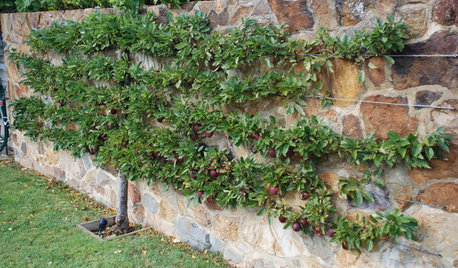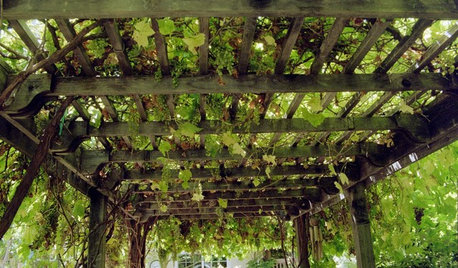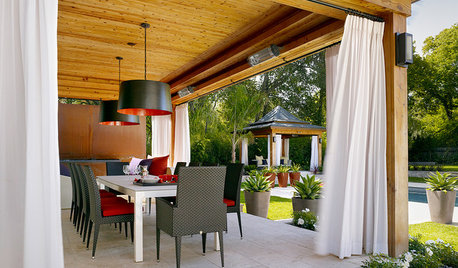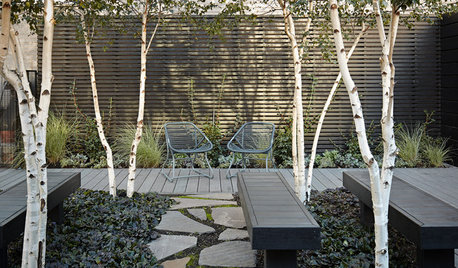Espalier
dursoc
11 years ago
Related Stories

LANDSCAPE DESIGNThe Art of the Espalier
Go ahead, let limited garden space drive you up the walls. With these 6 ways to train plants vertically, it can be a beautiful thing
Full Story
DESIGN DICTIONARYEspalier
Train branches or vines to grow in a flat plane, and you've got an espalier
Full Story0

EDIBLE GARDENSHow to Grow Your Own European and Asian Pears
Try these trees for their good looks, delicious fruit and wide range of sizes — plus you can espalier them
Full Story
EDIBLE GARDENSHow to Add an Apple Tree to Your Edible Garden
Readily available, beautiful and fragrant, apple trees offer four-season interest along with crisp, juicy fruit
Full Story
GARDENING AND LANDSCAPINGVertical Gardens Raise the Limits for Landscapes
Turn a small garden space into a towering success with an upward-bound collection of edible delights
Full Story
GARDENING AND LANDSCAPINGCrazy for Fruit Trees
Whether a single citrus or a mini apple orchard, even the smallest landscape space can bear deliriously delicious fruit
Full Story
FRUIT TREESHow to Grow Your Own Persimmons
Sturdy and easy to care for, these trees offer bright fruit through winter — and keeping them in bounds is no sweat
Full Story
FLOWERSGreat Design Plant: Sasanqua Camellia
Pretty fall flowers belie this plant's hardworking nature and relative tough attitude toward disease
Full Story
PATIOSGet Backyard Privacy the Subtler, Stylish Way
Why settle for a hulking brick wall when plants, screens and other refined backyard dividers do the job with panache?
Full Story
LANDSCAPE DESIGN5 Ways to Use Trees to Create a Sensational Garden Space
Trees define spaces in multiple ways and bring a layer of shade and intrigue to the landscape
Full StoryMore Discussions






missingtheobvious
prairiemoon2 z6b MA
Related Professionals
Marco Island Landscape Architects & Landscape Designers · Williamsburg Landscape Contractors · Indio Landscape Contractors · Lebanon Landscape Contractors · Little Ferry Landscape Contractors · The Woodlands Landscape Contractors · Wheat Ridge Landscape Contractors · Chillicothe General Contractors · El Monte General Contractors · Forest Grove General Contractors · Redan General Contractors · Shaker Heights General Contractors · Toledo General Contractors · North Aurora Decks, Patios & Outdoor Enclosures · Reading Decks, Patios & Outdoor Enclosures